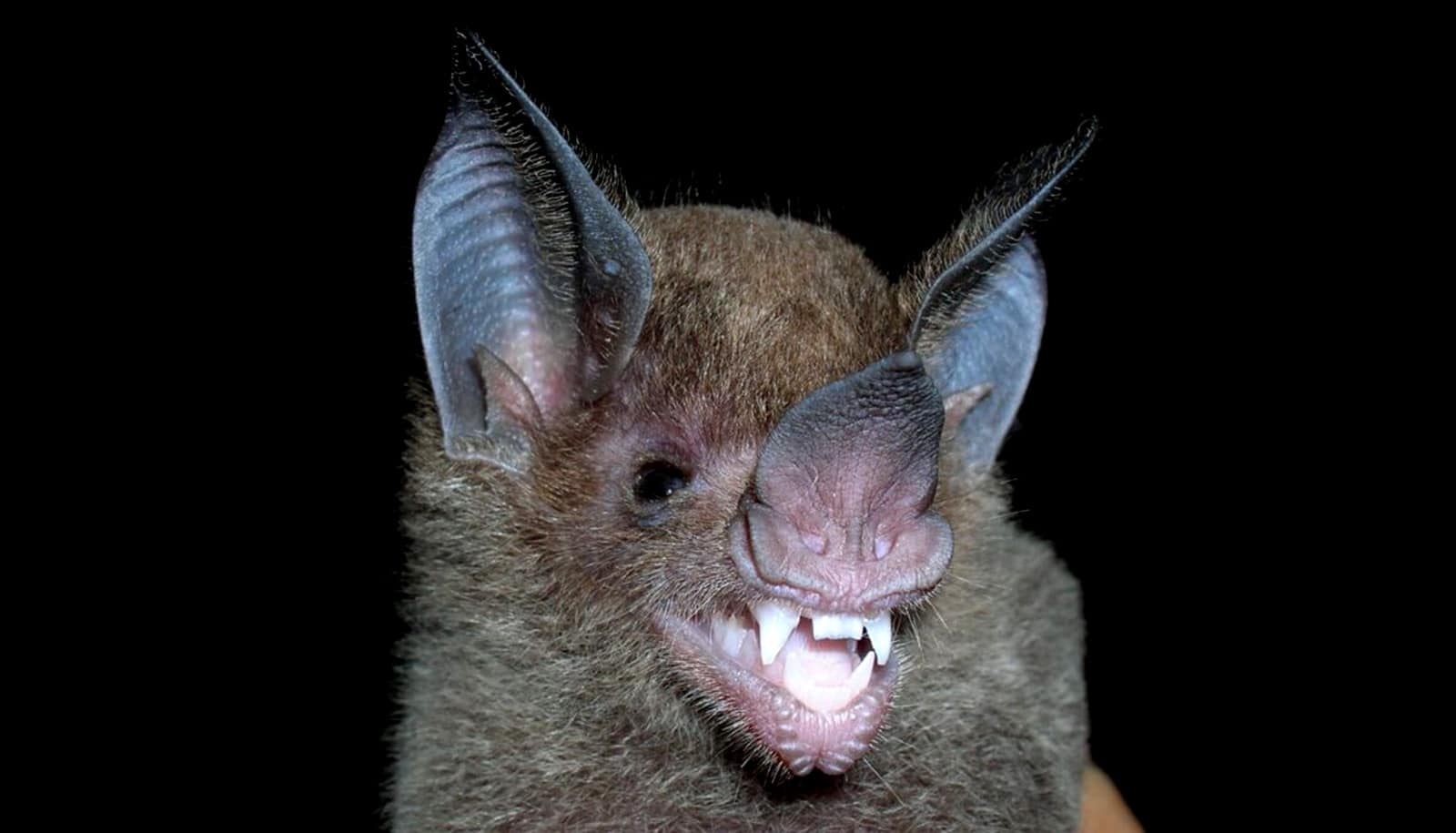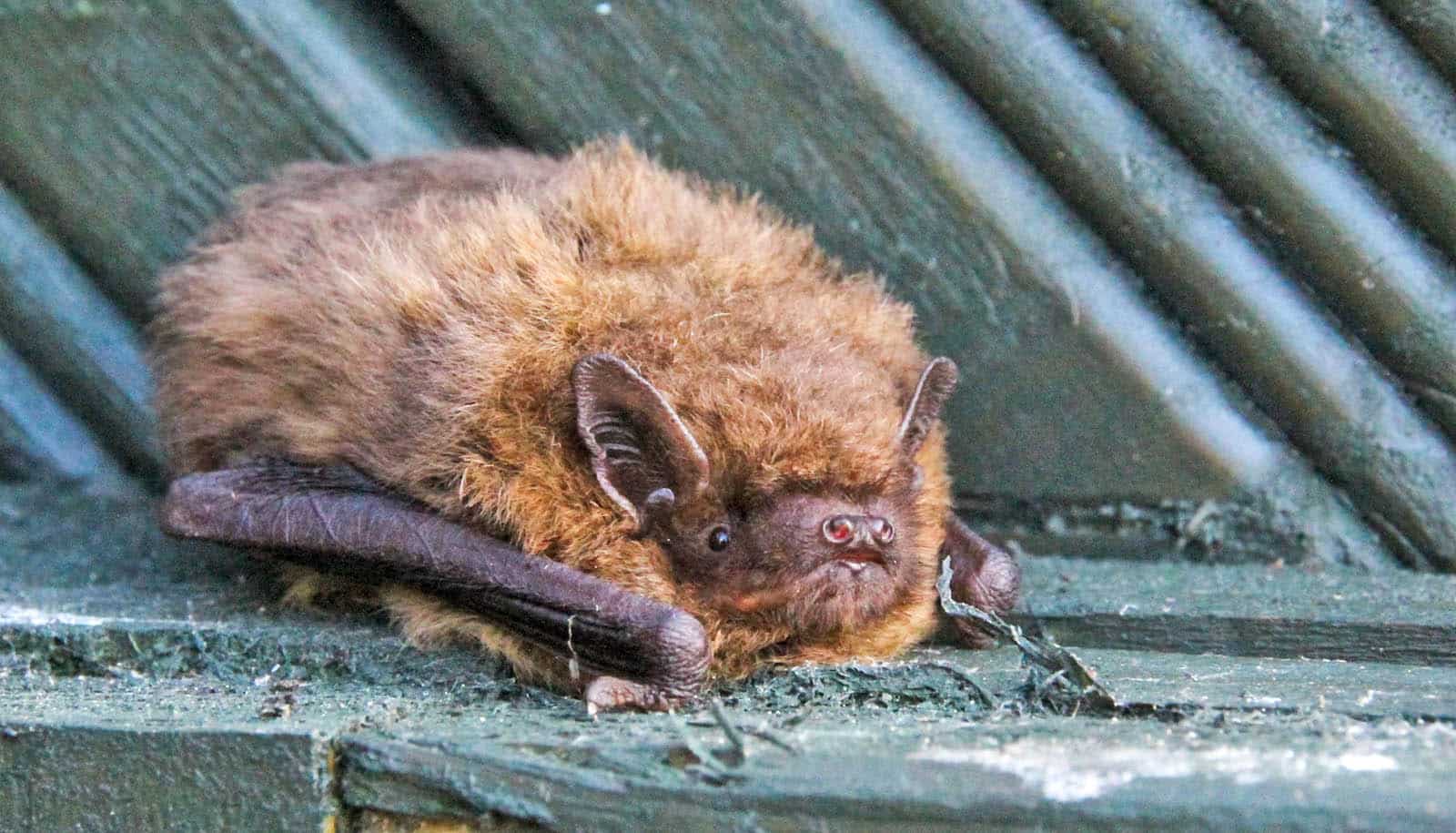Share this
Article
You are free to share this article under the Attribution 4.0 International license.
A group of 200 species of closely related bats evolved wildly divergent jaws, a study shows.
They don’t know it, but Darwin’s finches changed the world. These closely related species—native to the Galapagos Islands—each sport a uniquely shaped beak that matches their preferred diet. Studying these birds helped Charles Darwin develop the theory of evolution by natural selection.
A group of bats has a similar—and more expansive—evolutionary story to tell. There are more than 200 species of noctilionoid bats, mostly in the American tropics. And despite being close relatives, their jaws evolved in wildly divergent shapes and sizes to exploit different food sources.
The paper in Nature Communications shows those adaptations include dramatic, but also consistent, modifications to tooth number, size, shape, and position. For example, bats with short snouts lack certain teeth, presumably due to a lack of space. Species with longer jaws have room for more teeth—and, like humans, their total tooth complement is closer to what the ancestor of placental mammals had.
According to the research team behind this study, comparing noctilionoid species can reveal a lot about how mammalian faces evolved and developed, particularly jaws and teeth. And as a bonus, they can also answer some outstanding questions about how our own pearly whites form and grow.
“Bats have all four types of teeth—incisors, canines, premolars, and molars—just like we do,” says coauthor Sharlene Santana, a University of Washington professor of biology and curator of mammals at the Burke Museum of Natural History and Culture. “And noctilionoid bats evolved a huge diversity of diets in as little as 25 million years, which is a very short amount of time for these adaptations to occur.”
“There are noctilionoid species that have short faces like bulldogs with powerful jaws that can bite the tough exterior of the fruits that they eat. Other species have long snouts to help them drink nectar from flowers. How did this diversity evolve so quickly? What had to change in their jaws and teeth to make this possible?” says lead author Alexa Sadier, an incoming faculty member at the Institute of Evolutionary Science of Montpellier in France, who began this project as a postdoctoral researcher at the University California, Los Angeles.
Scientists don’t know what triggered this frenzy of dietary adaptation in noctilionoid bats. But today different noctilionoid species feast on insects, fruit, nectar, fish, and even blood—since this group also includes the infamous vampire bats.
The team used CT scans and other methods to analyze the shapes and sizes of jaws, premolars, and molars in more than 100 noctilionoid species. The bats included both museum specimens and a limited number of wild bats captured for study purposes. The researchers compared the relative sizes of teeth and other cranial features among species with different types of diets, and used mathematical modeling to determine how those differences are generated during development.
The team found that, in noctilionoid bats, certain “developmental rules” caused them to generate the right assortment of teeth to fit in their diet-formed grins. For example, bats with long jaws—like nectar-feeders—or intermediate jaws, like many insect-eaters, tended to have the usual complement of three premolars and three molars on each side of the jaw. But bats with short jaws, including most fruit-eating bats, tended to ditch the middle premolar or the back molar, if not both.
“When you have more space, you can have more teeth,” says Sadier. “But for bats with a shorter space, even though they have a more powerful bite, you simply run out of room for all these teeth.”
Having a shorter jaw may also explain why many short-faced bats also tended to have wider front molars.
“The first teeth to appear tend to grow bigger since there is not enough space for the next ones to emerge,” says Sadier.
“This project is giving us the opportunity to actually test some of the assumptions that have been made about how tooth growth, shape and size are regulated in mammals,” says Santana. “We know surprisingly little about how these very important structures develop!”
Many studies about mammalian tooth development were done in mice, which have only molars and heavily modified incisors. Scientists are not entirely sure if the genes and developmental patterns that control tooth development in mice also operate in mammals with more “ancestral” sets of chompers—like bats and humans.
The hairy-legged vampire bat, Diphylla ecaudata, feeds primarily on the blood of birds. It is one of three living species of vampire bats—all of them noctilionoid, and all with sharply reduced numbers of teeth and short jaws, likely due to their specialized diet.
Sadier, Santana, and their colleagues believe their project, which is ongoing, can start to answer these questions in bats—along with many other outstanding questions about how evolution shapes mammalian features. They’re expanding this study to include noctilionoid incisors and canines, and hope to uncover more of the genetic and developmental mechanisms that control tooth development in this diverse group of bats.
“We see such strong selective pressures in these bats: Shapes have to closely match their function,” says Santana. “I think there are many more evolutionary secrets hidden in these species.”
Coauthors are from King’s College London; Durham University in the UK; Green Shield Technology; Dresden University of Technology in Germany; and UCLA. The research has funding from the National Science Foundation.
Source: University of Washington











